Just before we married, my wife inherited a ramshackle of a place in Bonavista, Newfoundland. It was a hard-old spot that looked fit for nothing beyond the haunts that were rumoured to possess it. We intended to flatten it and use the lovely section of level land to build a new seaside cottage. But those plans changed the moment we stepped through the front door.
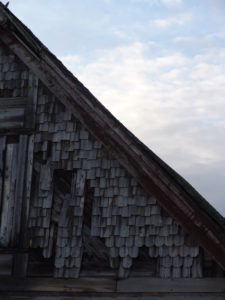
“… ramshackle of a place…”
Despite the exterior appearance, the home was still quite solid. It boasted a beautiful staircase, wide baseboards and ornate moldings. The upstairs was floored with wide, bare planks and the ground level had gorgeous hardwood and wainscoting throughout. We were pleasantly surprised by our discovery and immediately began to question the age and historic value it might possess.
We arranged to meet with the local heritage committee and though they were excited to get together, they seemed to have little interest in the property. As the conversation continued, it became apparent that they were just happy to find anyone willing to undertake the renovation of a heritage home. Few recognized their value back then, and most followed the course we had originally set; demolition.
I was dismayed by their behaviour and the nonchalance regarding the property, until further questioning revealed that this house was just one of over 1000 heritage homes found throughout the town of Bonavista.
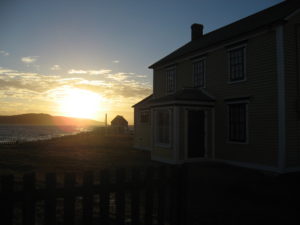
“… over 1000 heritage homes…”
Wow! 1000 homes? Each built over 100 years ago? To this quality and standard of construction? Amazing! Truly comfortable homes with the kind of luxury and amenity you’d only expect to find in regions of tremendous wealth and prosperity. Homes that were almost identical, though somewhat smaller than the perfectly preserved heritage home that Parks Canada renovated as a tribute to James Ryan and his merchant operations on the Bonavista waterfront.
We were truly shocked. So much for all the stories they taught us about the “evil merchant” and the impoverishment caused by a cashless society engaged in a mercantile “truck system” so completely entrenched by “credit and debts”. Here we were faced with archaeological evidence that proved the exact opposite. The merchants of Bonavista obviously engaged in a more egalitarian system, sharing their spoils so that everyone in the community benefited from the hard work and toil that created it – not just the merchant.
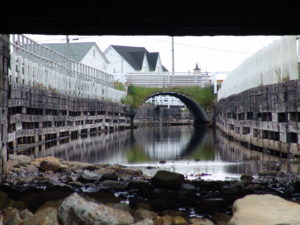
“… luxury and amenity…”
Unfortunately, this subject has proven to be quite irksome for some; as is best explained in this conversation with a local lobster fisherman;
“I’ll tell you something young feller! The only one that ever made any money in the Newfoundland fishery was the God damned merchant!”
“Eh boy?”, I queried;
“So that brand-new Ford F350 Lariat pick up truck you just parked at the wharf? Borrowed that from the merchant this morning, did ya?”
“What?”
“And that place where you spent the winter in Arizona? You were only house sitting for the merchant, were you?”
“Ahh shut up Andrew.”

“… tremendous wealth and prosperity…”
There’s no doubt this theory flies in the face of the history we’ve been taught, but really? Surely there were many hardships endured at the hands of the St. John’s merchant in the early 20th century – when everyone on the planet was suffering through a worldwide depression. Yet, despite all the wealth we’ve experienced throughout the ages, for some reason we have clung to this short period as our standard of measure and criticism for all of history.
Perhaps its time for us to adjust our thinking so that we can better appreciate our environment and recognize the great wealth and comforts it bestows. Continuing to think like the “downtrodden” leaves little hope or expectation beyond the poverty and corruption to which we somehow feel betrothed.
Check out these sights for further displays of Newfoundland’s great wealth and prosperity;
1. Any of the magnificent cathedrals on the island – one is actually a Basilica
2. The ‘Hole in the Wall’ tunnel and the drainage canal systems in Brigus
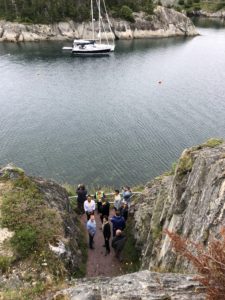
3. The number of phonograph players collected by the Moreton’s Harbour Museum
4. All the towns considered for the country’s capitol – Harbour Grace, Carbonear, Trinity
5. The Karsh photos of Bell Island’s mines and farming operations
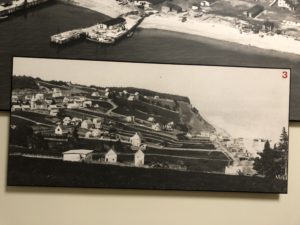
6. The multitude of beautiful Jelly Bean Houses in St. John’s
7. All the small hydro electric plants scattered throughout the Avalon peninsula
8. The oil storage warehouses mined into the cliffs on the south side of St. John’s Harbour
9. The Vase on display at the Baltimore interpretation center in Ferryland
10. The Roman styled roads and bridges in French’s Cove and Juggler’s Cove located just north of Bay Roberts

